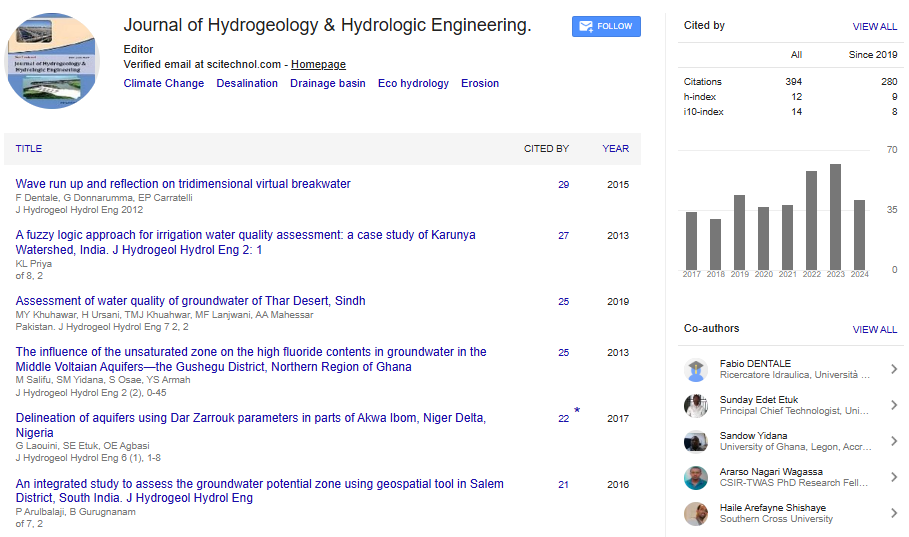Trench weir: An innovative structure for diverting water from high gradient rivers
Zulfequar Ahmad and Sanjeev Kumar
Indian Institute of Technology Roorkee, India
Graphic Era University, India
: J Hydrogeol Hydrol Eng
Abstract
Conventional types of raised-crest weirs for diverting water from the high gradient rivers for its use in generation of hydropower, irrigation, water supply schemes, etc. are not well suited as the afflux brings a remarkable change in morphology of the river. The sediments are deposited upstream of the crest as a result, the intake gets easily choked up. Moreover, any structural component that protrudes out of the river-bed gets damaged easily by the force of large sediments rolling down during floods. The most suitable weir adopted in such scenario is trench weir, which is simply a trench built across the river below its bed level. The top of the trench is covered with bottom rack bars. Water while flowing over it, passes through the bottom racks and enters into the trench and being collected in an intake well located at either of the banks at the end of the weir. This type of weir has a definite advantage as it does not affect the morphology of the river. However, due to being below the bed of the river, the bed sediment load of size less than the clear spacing of the rack bars enters into the trench which necessitates post-monsoon clearance of the trench. A photograph of a trench weir showing its various components is shown in Figure-1. Hydraulics of the trench weir covering its discharging capacity under free and submerged conditions, water surface profile, ingestion of the sediment into trench, etc., have been studied. Tracking of sediment over the bottom racks has also been carried out to investigate the mechanics of movement of sediment and its ingestion into the trench. Shape and size of the trench has also been optimized for maximum withdrawal of discharge from the river. Discharging efficiency of various shapes of bars like circular, flat, T-shape of bottom racks has also been investigated. Relationships have been developed for the discharging capacity of the weir, quantification of sediment ingestion into the trench, water surface profiles, etc. Based on the investigations, design norms for the trench weir have been developed and such norms are successfully adopted in the design of trench weirs. Satisfactory performance of the constructed trench weir, designed on the basis of the developed norms, has been noticed.
 Spanish
Spanish  Chinese
Chinese  Russian
Russian  German
German  French
French  Japanese
Japanese  Portuguese
Portuguese  Hindi
Hindi 
